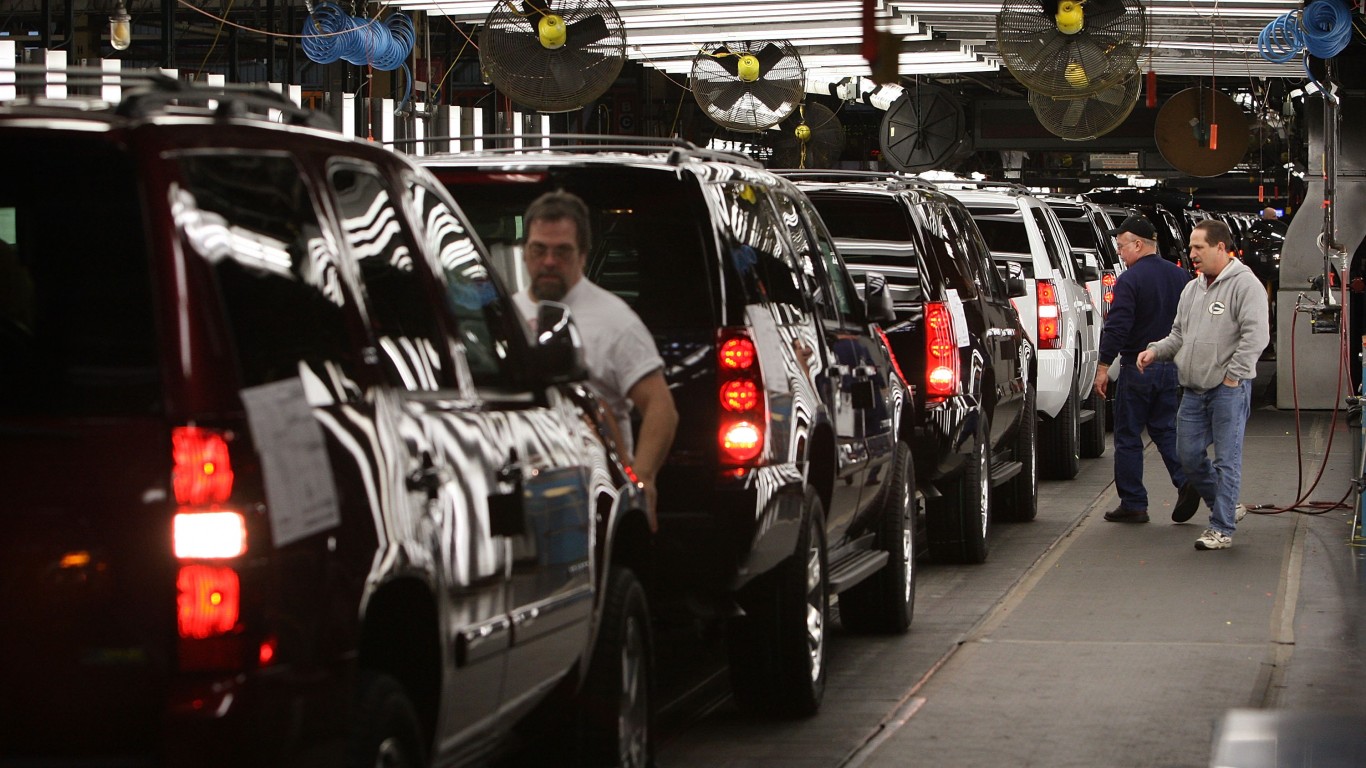Cars and Drivers
New Car Sales Down 8% in 2022 -- and 2023 Will Be Challenging Too

Published:

Every one of America’s 10 leading sellers of new cars saw its share price fall since the beginning of 2022. Eight of those 10 also sold fewer cars than they did in 2021.
The sales leader based on unit sales volume was General Motors Inc. (NYSE: GM). According to Cox Automotive’s forecast for full-year 2022 sales, GM’s sales for the year will reach just over 2.25 million vehicles, up 2.3% compared to 2021 sales.
The next eight automakers are all expected to sell fewer units this year. This group includes Toyota Motor Corp. (NYSE: TM), number two with unit sales of around 2.12 million (down 9.0% year over year); Ford Motor Co. (NYSE: F), down 2.9% with sales of 1.84 million units; and Stellantis N.V. (NYSE: STLA), with expected sales of 1.54 million units (down 13.2%).
At number 10, Tesla Inc. (NASDAQ: TSLA) is forecast to sell nearly 525,000 units, up 48.9% year over year. Yet Tesla’s share price is down about 69% with just two more trading days left in 2022.
Cox has forecast total sales for the year to fall to 13,860,055 units, down 8% compared to 2021 sales.
Here is a chart showing year-over-year sales numbers, along with share price declines. The chart is presented in descending order of share price changes.
| Maker | 2022 Sales | Sales change | Market share change | Share price change |
|---|---|---|---|---|
| Tesla | 524,693 | 48.9% | 1.4% | −69.00% |
| Ford | 1,837,603 | −2.9% | 0.7% | −44.30% |
| GM | 2,253,641 | 2.3% | 1.6% | −42.90% |
| Volkswagen | 555,404 | −13.4% | −0.2% | −35.00% |
| Nissan | 819,989 | −24.1% | −1.3% | −28.80% |
| Toyota | 2,122,665 | −9.0% | −0.2% | −24.87% |
| Hyundai-Kia | 1,470,875 | −1.2% | 0.7% | −24.53% |
| Stellantis | 1,542,301 | −13.2% | −0.7% | −19.38% |
| Honda | 977,363 | −33.3% | −2.7% | −17.08% |
| Subaru | 553,619 | −5.2% | 0.1% | 15.34% |
Volkswagen (VOWY) and Subaru (FUJHY) trade over the counter, while Hyundai-Kia and Nissan do not trade at all in the United States.
The outlook for 2023 is muted, to say the least. Cox Automotive cites 10 trends the analysts think will shape new and used car sales next year.
Let’s face it: If your money is just sitting in a checking account, you’re losing value every single day. With most checking accounts offering little to no interest, the cash you worked so hard to save is gradually being eroded by inflation.
However, by moving that money into a high-yield savings account, you can put your cash to work, growing steadily with little to no effort on your part. In just a few clicks, you can set up a high-yield savings account and start earning interest immediately.
There are plenty of reputable banks and online platforms that offer competitive rates, and many of them come with zero fees and no minimum balance requirements. Click here to see if you’re earning the best possible rate on your money!
Thank you for reading! Have some feedback for us?
Contact the 24/7 Wall St. editorial team.